How to Fix Mac Error Code 43 When Copying Files
Getting an OS system error message while working on a project can be quite an unpleasant surprise. Whether relating to MS Windows, or Mac OS, such a bug is always bound to disrupt your normal computer work. While some errors tend to be system-specific, others can affect both Windows and Mac-based systems, albeit designating totally different problems. The so-called Code 43 error message, for example, is primarily associated with device driver problems in Windows PCs, on the one hand, and file transfer issues on Mac machines, on the other.
If you are using Windows and looking for a way to fix this specific error, click here for a guide with possible solutions.
If you are a Mac user, however, we encourage you to read on as we tell you everything you need to know should the Code 43 error ever come up on your screen.
Table of Contents
What Does Mac Error Code 43 Mean?
Often referred to as "Error code -43", Error Code 43 arrives in a pop-up window identical to the one below which says "The operation can't be completed because one or more required items can't be found. (Error code -43)".
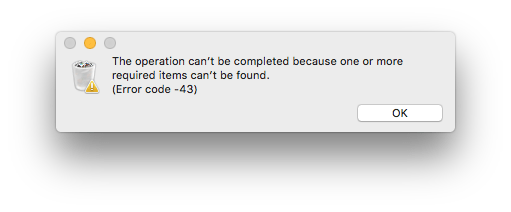
You are most likely to face an Error code 43 while trying to:
- copy data from one folder to another
- transfer files from and to a USB drive
- send them to the trash can
It appears that this particular error is fairly common in computers running either the OS X El Capitan, or the OS X Jaguar. Getting an Error code 43 practically puts an end to the file managing operation that triggers it unless you fix it accordingly.
Why Do I See Mac Error Code 43?
There are 4 primary reasons why you could be seeing a 'Mac Error code 43' pop-up, namely:
- Incompatible file name characters - "@", "!", "#", "%", "^", and "$"
- Incomplete, locked, or currently open files
- A shared file(s) problem (no shared point)
- A problematic hard disk.
Every OS, including MS Windows and Mac OS, has its own file naming rules. Since those rules aren't uniform, a file created in an MS Windows environment may turn out to contain characters that are forbidden in a Mac OS, and vise versa. Incompatible file name characters arise whenever you want to transfer files whose names contain at least one of the following symbols: "@", "!", "#", "%", "^" onto a Mac OS-based PC. While a Windows-based system will have no problem recognizing such files, a Mac OS one will not. Therefore, before you mount an external USB drive to a Mac, make sure to check the naming protocol of your files beforehand.
The same scenario will take place if the file you wish to copy, move, or delete is incomplete, active, or locked. Incomplete are files whose download process is still in progress. Active files are still in use by one or more system applications. To see which apps are preventing a file from going to the Trash can, take advantage of the lsof Terminal command which keeps track of all files currently in use by one or more system components. To execute the command type:
A hard drive problem could also prevent you from accessing a file on your Mac. If so, your HDD or SSD may have developed a few bad sectors or undergone physical damage. While the former can be fixed using diagnostic tools, the latter leaves little room for maneuver. So, if you get a response like "The underlying task reported failure.", you may need to format or replace the whole drive.
How Do I Fix Mac Error Code 43?
There are 3 conventional ways of action whenever you are faced with an Error Code 43 message on your Mac. They include:
- Performing a PRAM (Parameter Random Access Memory) or NVRAM (Non-volatile Random Access Memory) reset.
- Checking your HDD/SDD Using Mac’s Built-in Disk Utility
- Removing locked files
Here is a detailed overview of each method:
PRAM and NVRAM Reset
Since both PRAM and NVRAM serve to keep certain system settings and access them swiftly upon request, they share one and the same reset procedure.however, if you have a firmware password, make sure to turn it off first.
- Shut down your Mac computer.

- While your PC is shutting down, use the time to locate the Command, Option (Alt), P, and R keys on the keyboard.
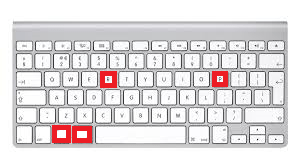
- Turn on your Mac PC and, as soon as it starts booting, press and hold down the four keys
Option (Alt)+ Command, + P + R before the gray startup screen has loaded. Release the keys after you've heard the startup sound three times!
Following a PRAM and NVRAM reset, check if Error code 43 is still coming up. If it is not fixed, use the built-in Disk Utility feature to look for alternative file storage problems.
Disk Utility Check
Your Mac's built-in Disk Utility is an excellent tool for spotting a multitude of HDD/SDD issues. Once you've determined which drive is storing the file you wish to move, run a Disk Utility check by following the steps set out below. There's a good chance that this tool will spot missing or corrupt files as they are the primary reason why you would see an Error 43 code triggered by an HDD/SSD problem.
- Restart your Mac from the Apple menu

- While your Mac is restarting, press and hold the Command and R keys simultaneously until the Apple logo shows up on your screen.
- Select Disk Utility -> Continue.
- Select the partition/drive storing the file you want to copy and click on the "First Aid" button.
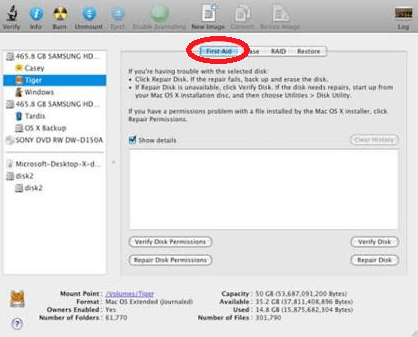
- Wait for the Disk Utility process to complete and take a look at the reports.
A regular Disk Utility scan ends with a report which may show:
- "overlapped extent allocation" errors occurring whenever two or more files occupy the exact same space on the hard disk, and it is more than likely that at least one of them is corrupted. The corrupted files are located in the "DamagedFiles" folder. Ideally, the file you wish to move will not be corrupt. However, if it is, you could still find it in your DamagedFiles folder and try to repair it as a last resort. "The underlying task reported failure" message (see post above) which gives you no other option than to run another First Aid repair on the disk or partition. If the second scan meets with success, you will regain access to the file. Otherwise, you should attempt to back up your data, reformat the disk, reinstall macOS, and restore the backed-up files.
Locked Files Removal
Should the files you are wishing to delete have a "locked" status, trying to do so will once again result in an Error 43 pop-up on your screen. Nevertheless, Mac OS offers you a workaround which will allow you to get rid of those files without having to unlock them at all. Here's how:
- Turn on your Mac OS machine.
- Open the Terminal (accessed through Applications->Utilities->Terminal)
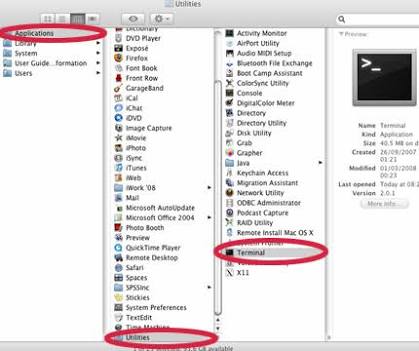
- Run the chflags -R nouchg command to load a list of lock-flagged files
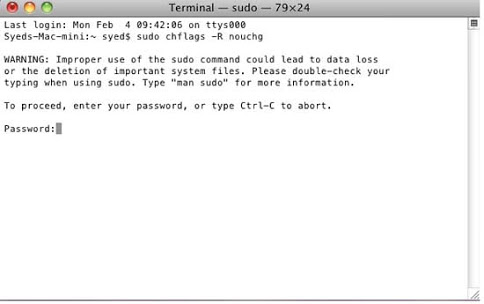
- Press Command + A to select the whole list of files, then empty the Trash Can.
Executing the steps mentioned above should remove the conflicting files successfully, thus eliminating the Error 43 pop-up.
Round-Up
The Error 43 code may show up on your Mac screen when dealing with file transfer. The reasons vary in degree, and so do the possible solutions. Depending on the specific occasion, fixing the problem may, or may not, cause damage to some of your data. Regular diagnostics, patches, and backups play a crucial role in keeping your Mac system error-free.